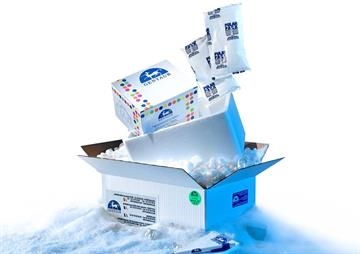- Categories
- Specials and Offers
- Custom Services
- Products
CCL26/Eotaxin-3 Protein, Human, Recombinant


CCL26/Eotaxin-3 Protein, Human, Recombinant
789.84 €
In Stock
quantity
product details
Catalog number: 426 - E45H51421I0-20
Product Category: Business & Industrial > Science & Laboratory
EnoGeneGentaur
Size: 20 ug
Related Products
200-015
Human IL-3 Recombinant Protein
IL-3 is a hematopoietic growth factor that promotes the survival, differentiation and proliferation of committed progenitor cells of the megakaryocyte, granulocyte-macrophage, erythroid, eosinophil, basophil and mast cell lineages. Produced by T cells, mast cells and eosinophils, IL-3 enhances thrombopoieses, phagocytosis, and antibody-mediated cellular cytotoxicity. Its ability to activate monocytes suggests that IL-3 may have additional immunoregulatory roles. Many of the IL-3 activities depend upon co-stimulation with other cytokines. IL-3 is species-specific, variably glycosylated cytokine. Recombinant human IL-3 is a 15.0 kDa globular protein containing 133 amino acid residues.
370.88 €
200-015-SC
Human IL-3 Recombinant Protein
IL-3 is a hematopoietic growth factor that promotes the survival, differentiation and proliferation of committed progenitor cells of the megakaryocyte, granulocyte-macrophage, erythroid, eosinophil, basophil and mast cell lineages. Produced by T cells, mast cells and eosinophils, IL-3 enhances thrombopoieses, phagocytosis, and antibody-mediated cellular cytotoxicity. Its ability to activate monocytes suggests that IL-3 may have additional immunoregulatory roles. Many of the IL-3 activities depend upon co-stimulation with other cytokines. IL-3 is species-specific, variably glycosylated cytokine. Recombinant human IL-3 is a 15.0 kDa globular protein containing 133 amino acid residues.
528.00 €
200-016
Human IL-3 Recombinant Protein
IL-3 is a hematopoietic growth factor that promotes the survival, differentiation and proliferation of committed progenitor cells of the megakaryocyte, granulocyte-macrophage, erythroid, eosinophil, basophil and mast cell lineages. Produced by T cells, mast cells and eosinophils, IL-3 enhances thrombopoieses, phagocytosis, and antibody-mediated cellular cytotoxicity. Its ability to activate monocytes suggests that IL-3 may have additional immunoregulatory roles. Many of the IL-3 activities depend upon co-stimulation with other cytokines. IL-3 is species-specific, variably glycosylated cytokine. Recombinant human IL-3 is a 15.0 kDa globular protein containing 133 amino acid residues.
449.62 €
100-370S
Human PlGF-3 Recombinant Protein
PlGF-3 is an angiogenic factor that belongs to the cysteine-knot superfamily of growth factors. PlGF-3 is expressed exclusively in the placenta. It signals through the VEGFR-1/FLT1 receptor and stimulates endothelial cell proliferation and migration. PlGF-3 lacks heparin binding affinity. Recombinant human PlGF-3 is a 45.7 kDa disulfide-linked homodimeric protein of two 203 amino acid polypeptide chains.
438.60 €
100-394
Human BMP-3 Recombinant Protein
TGF-β family members are key modulators of cell proliferation, differentiation, matrix synthesis, and apoptosis. As implied by their name, BMPs initiate, promote, and regulate the development, growth and remodeling of bone and cartilage. In addition to this role, BMPs are also involved in prenatal development and postnatal growth, remodeling and maintenance of a variety of other tissues and organs. BMP-3 is abundantly found in adult bone, and to a lesser extent fetal cartilage. BMP-3 inhibits osteogenesis and bone formation by activating a signaling cascade that antagonizes the signaling of pro-osteogenic BMPs. Recombinant human BMP-3 is a disulfide linked homodimeric protein that corresponds to residues 361 to 472 of the 472 amino acid BMP-3 precursor protein.
444.52 €
100-394S
Human BMP-3 Recombinant Protein
TGF-β family members are key modulators of cell proliferation, differentiation, matrix synthesis, and apoptosis. As implied by their name, BMPs initiate, promote, and regulate the development, growth and remodeling of bone and cartilage. In addition to this role, BMPs are also involved in prenatal development and postnatal growth, remodeling and maintenance of a variety of other tissues and organs. BMP-3 is abundantly found in adult bone, and to a lesser extent fetal cartilage. BMP-3 inhibits osteogenesis and bone formation by activating a signaling cascade that antagonizes the signaling of pro-osteogenic BMPs. Recombinant human BMP-3 is a disulfide linked homodimeric protein that corresponds to residues 361 to 472 of the 472 amino acid BMP-3 precursor protein.









